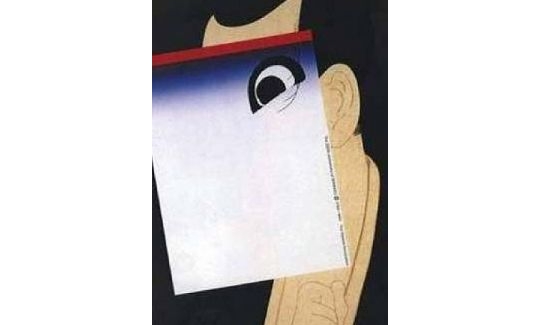The exhibition presents works by contemporary Japanese designers who have been inspired by the renowned artist Toshusai Sharaku (active 1794-1795).
Sharaku was an outstanding artist who created woodblock prints in the ukiyo-e (pictures from the floating world) genre. Among the one hundred and forty prints known today, there a series of twenty-eight portraits of Kabuki actors from Sharaku's early period. These are coloured prints, but the number of colours he employed is limited. Composition is simple, combining the face, arms and bust of his subject against a sparkling background. When contemplating his works, they instantly become engraved on the memory due to their power. Sharaku's intention was not to paint realistic portraits but to reveal the intimate traits of the personality concealed beneath the heavy make-up of the Kabuki actor. For example, in the print of Matsumoto Koshiro IV as Gorobei, the fishmonger from Sanya, who helped two sisters to avenge their father's murder, has a noble countenance. The actor, however, was known to be an aggressive type, and this is very evident in the print. In a period when prints of actors were to the taste of the lower classes, Sharaku's prints wee considered as avant-garde because of their frozen expressions, their distortion, and the exaggeration of their features. His grotesqueries certainly surprised the audience, who preferred the conventional Kabuki prints of artists of the Katsukawa School, or those of beautiful women by Kitagawa Utamaro (1753-1806).
The works of contemporary Japanese designers and artists reveal the link between graphic design today and the traditional ukiyo-e. They also give expression to a broad spectrum of artistic approaches. Every artist copes with a subject in his/her own way and with different materials. This exhibition is a combination of three parts. The first presents twenty-eight of Sharaku's portrait prints, reproduced by the Adachi Institute of Woodblock Prints. This series is based on Kabuki and Kyogen dramas that were performed in May 1794 at the Kabuki Theatre in Edo (today Tokyo). The reproductions are faithful to the originals, of which few are still extant, though about six hundred prints by Sharaku are to be found all over the world today. By comparison with the subdued colours of the originals, those of the reproductions are bright and lively.
The second section deals with graphic art. Out of the sixty-seven works by contemporary designers that were displayed in "Two Hundred Years of Sharaku", an exhibition curated by Fukuda Shigeo and organized by the newspaper Mainichi Shimbun, this exhibition presents twenty-eight works aligned with the Sharaku portrait prints referred to above. These are placards created by the most outstanding designers working in Japan today. They are characterized by the emphasis on a single facial feature in Sharaku's portraits - eyes, eyebrows, mouth, hair, or hands, and the re-positioning of such elements in the placard. Because of the graphic characteristics of these prints and their "quotations", the link with Sharaku's original works is reinforced. Furthermore, prints and placards are media that allow many copies to be made. Such copies infiltrated daily life in the Edo era (1603-1868), just as the graphic art of today, dealing with subjects that interest contemporary society, is a visual art accessible to everyone. The traditional prints and the contemporary versions deal with everyday life, and are considered as a medium of communication.
The third section is a tribute to Sharaku himself, presenting eleven contemporary works by young Japanese artists - sculpture, paintings, photographs, ceramics, and prints. By comparison with the graphics that are closer to prints, these works, most of which have been created specifically for this exhibition, and the ukiyo-e prints are worlds apart. While some artists have used Sharaku's figures as the basis of their own works, those of others seem to have no immediate visual connection with his works. They do not necessarily employ Sharaku's elements, but present individual concepts deriving from his work. Thus, even if they bring to mind Sharaku's prints, they are personal and novel. The works of the contemporary artists do not always flatter Sharaku. Rather, they create different works in their own style, reflecting their own spirit.
The specific and personal approaches to Sharaku's works by these contemporary artists reiterate the unique magic of this remarkable artist, and create an interesting resonance from the traditional Japanese woodblock prints to contemporary Japanese design.
Acknowledgements:
The exhibition is presented by courtesy of The Japan Foundation and the Japanese Embassy in Israel. We are most grateful to them.

